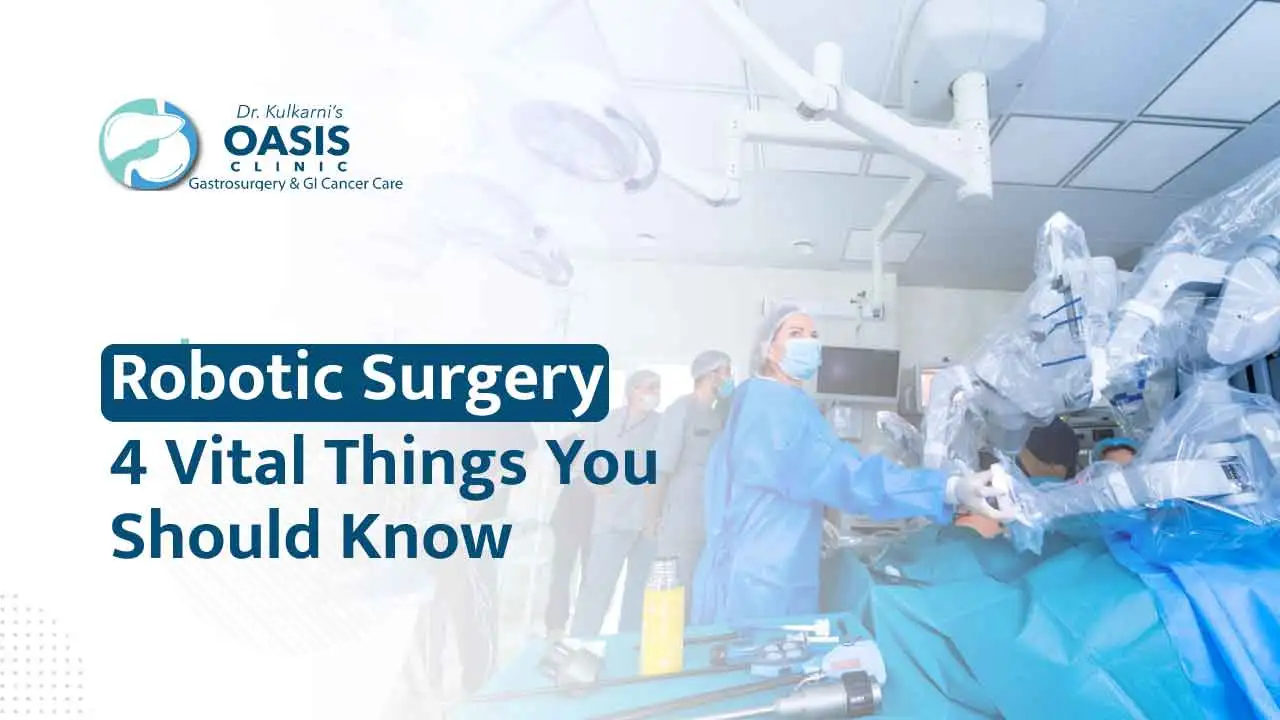Robotic Surgery: 4 Vital Things You Should Know
Robotic surgery is a cutting-edge technology that has revolutionized the field of medicine.
This minimally invasive surgical technique uses advanced robotic systems to perform complex surgeries with greater accuracy and precision.
Robotic surgery offers a wide range of benefits, including shortened recovery times, reduced risks of infection, minimal scarring, and improved patient outcomes.
As this technology continues to evolve and become more accessible, robotic surgery is quickly becoming the preferred method for many surgical procedures.
In this article, we will explore the benefits of robotic surgery and discuss why it is becoming an increasingly popular choice among doctors and patients.

Jump On :
Overview of Robotic Surgery
Robotic surgery is a minimally invasive procedure in which the surgeon operates on the patient using robotic technology. This surgery involves a small incision through which the robotic device is inserted and guided to manipulate and remove tissue.
This technology allows surgeons to perform complex tasks with greater precision and accuracy than traditional surgical procedures.
Robotic surgery offers several advantages over traditional surgical procedures, including shorter recovery times, reduced infection and internal damage risks, minimal scarring, and improved overall patient outcomes.
Additionally, due to its high level of precision, robotic surgery can often be performed more quickly than traditional methods.
With these benefits in mind, it is no surprise that robotic surgery has become an increasingly popular choice for many surgical operations.
Most Common Robotic Surgery Procedures
Robotic prostatectomy is one of the most common types of robotic surgery. This procedure involves removing the entire prostate gland to cure cancer or relieve urinary obstruction. Benefits of robotic prostatectomy include reduced risk of complications, decreased blood loss, and improved patient outcomes.
Robotic hysterectomy is another common robotic surgery procedure. This procedure involves removing the uterus and associated reproductive organs, thus treating conditions such as uterine fibroids or prolapse.
The technician utilizes robotics to make the process more precise and efficient for the surgeon, which can lead to fewer complications, shorter hospital stays, and less scarring.
Robotic gastric bypass surgeryis also gaining popularity due to its ability to reduce tissue trauma and provide faster patient recovery than traditional methods. Benefits of a robotic gastric bypass include:
- Reduced risk of infection.
- Smaller incisions than traditional methods.
- Low rate of complication.
- Improved overall patient outcomes.
Robotic और Conventional Surgery में क्या अंतर होता है ?
Choosing a Robotic Surgery Procedure
Choosing a robotic surgery procedure can seem daunting, but it is important to carefully consider all the details before deciding.
The patient’s age, health status, and type of surgery needed should all be considered when deciding.
For elderly patients or those with certain health conditions, robotic surgery may provide less risk of complications than traditional methods due to reduced blood loss and improved precision of the robotic instruments.
Patients should also consult their doctor about the best type of surgery based on their needs, as different procedures may lead to different outcomes.
For example, robotic prostatectomy is only necessary for prostate cancer, while gastric bypass surgery is typically chosen for obesity management.
It is also important to remember that any surgery carries potential risks and complications, so patients should discuss these issues with their doctor before making a final decision.
Choosing a Robotic Surgery Procedure
Choosing a robotic surgery procedure can seem daunting, but it is important to carefully consider all the details before deciding.
The patient’s age, health status, and type of surgery needed should all be considered when deciding.
For elderly patients or those with certain health conditions, robotic surgery may provide less risk of complications than traditional methods due to reduced blood loss and improved precision of the robotic instruments.
Patients should also consult their doctor about the best type of surgery based on their needs, as different procedures may lead to different outcomes.
For example, robotic prostatectomy is only necessary for prostate cancer, while gastric bypass surgery is typically chosen for obesity management.
It is also important to remember that any surgery carries potential risks and complications, so patients should discuss these issues with their doctor before making a final decision.
Preparing for Robotic Surgery
Preparing for robotic surgery can be a stressful experience. It is essential to take the necessary steps to ensure a successful outcome.
Before the procedure, patients should discuss pertinent medical information with their doctor, ask questions, and get clear instructions on pre-surgery preparations, such as fasting or avoiding certain medications.
During surgery, patients will be anesthetized, hence they will not have awareness of the surgery.
After surgery, patients will likely experience minor pain and discomfort, which can be managed using over-the-counter pain relievers. Patients are also advised to drink plenty of fluids and rest to promote faster healing. Other tips for recovery include:
- Doing light exercise such as walking.
- Taking short naps throughout the day.
- Eating nutritious meals.
Conclusion
Robotic surgery has revolutionized how we approach surgical procedures, improving accuracy and precision while reducing the risks of complications.
For patients seeking a safe and effective operation, robotic surgery is a viable option that can provide successful outcomes.
With careful consideration and preparation, patients can ensure that their chosen procedure is appropriate for their health and likely to deliver the desired results.
Ultimately, robotic surgery provides an innovative solution for those needing additional support regarding medical treatments.

Dr. Aditya Kulkarni
MS, DNB, FRCS, MCh (Surgical Gastroenterology & GI Oncology)
Dr. Aditya Kulkarni is a Consultant of Laparoscopic and Robotic Gastrointestinal, Hepato-biliary-pancreatic, and Cancer Surgeon at the renowned Oasis Surgery Clinic Pune.
Book An Appointment
Blogs
[dgbc_blog_carousel posts_number=”3″ type=”3″ include_categories=”3″ show_excerpt_length=”140″ show_categories=”off” show_author=”off” show_more=”on” use_button_icon=”on” button_icon=”$||divi||400″ module_class=”patient-education-blogs” _builder_version=”4.16″ _module_preset=”default” header_font=”Raleway|700|||||||” header_font_size=”21px” header_line_height=”30px” meta_text_color=”#888888″ content_font_size=”16px” content_line_height=”28px” read_more_font=”|700|||||||” read_more_text_color=”#e04880″ read_more_font_size=”15px” custom_css_title=”padding-top: 20px;” locked=”off” global_colors_info=”{}”][/dgbc_blog_carousel]
